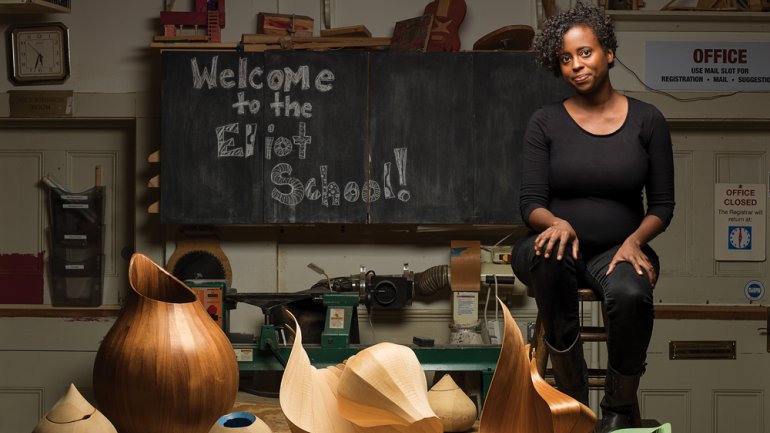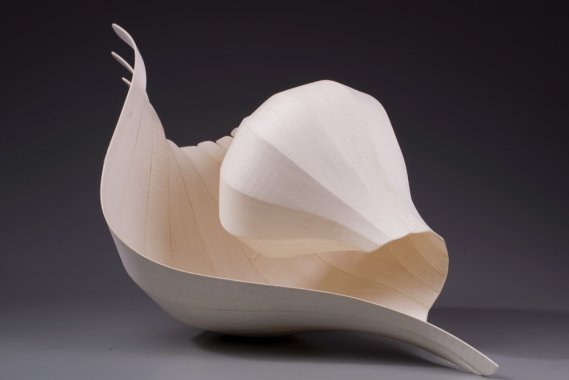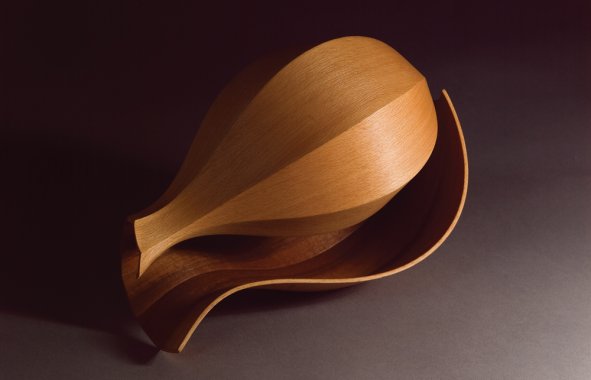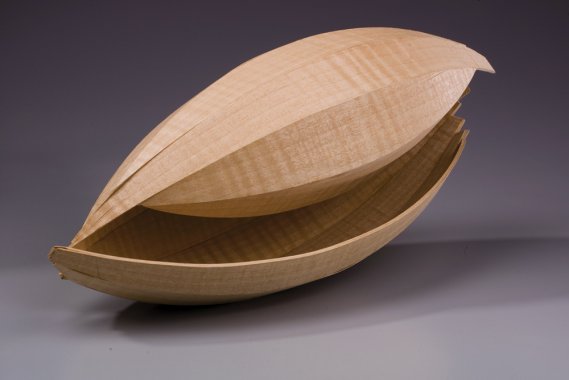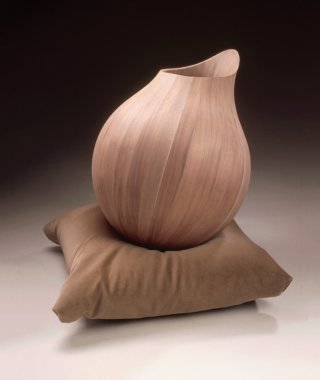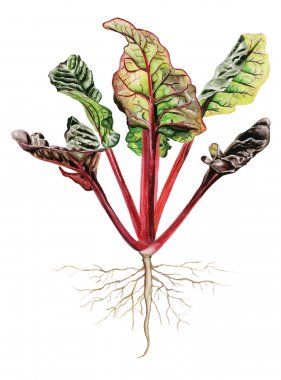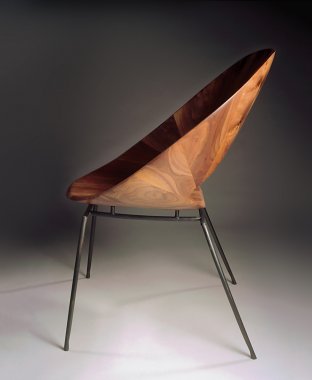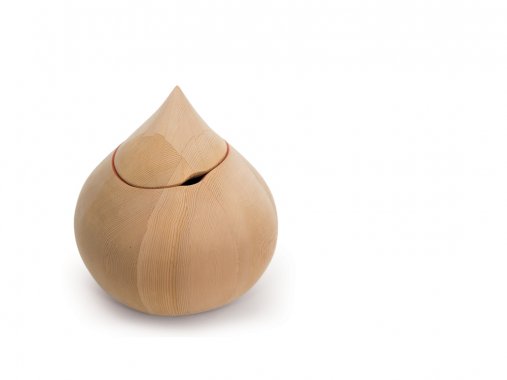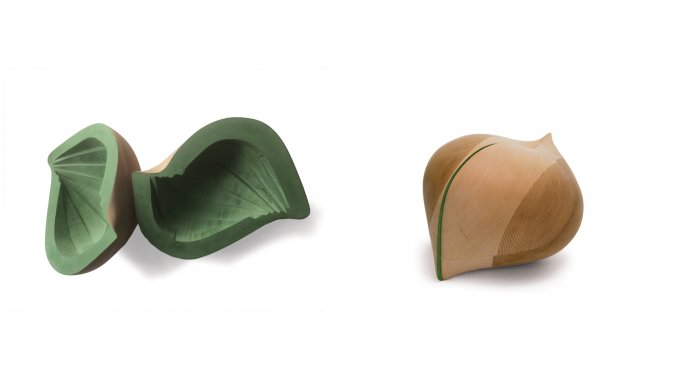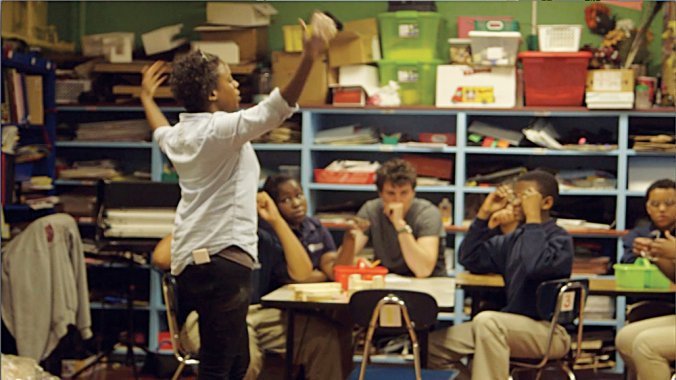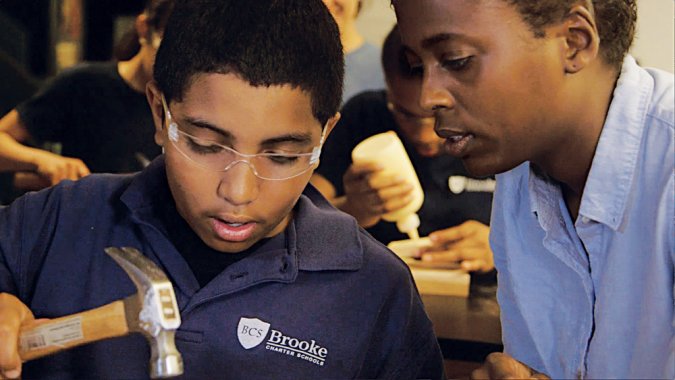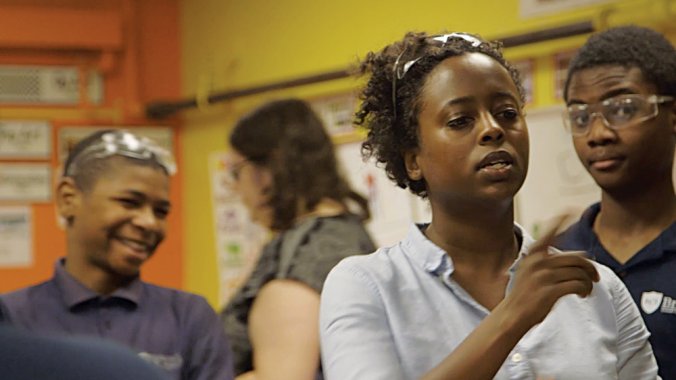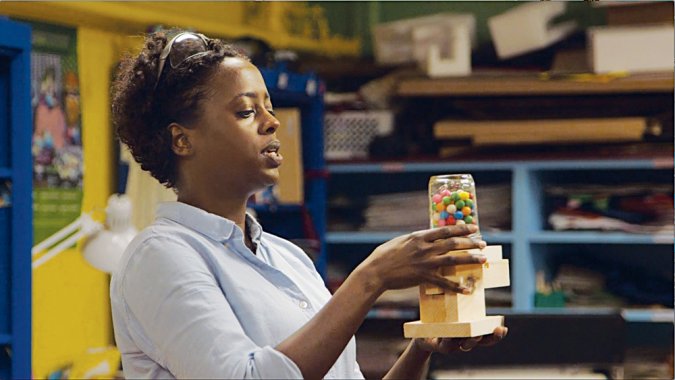On Her Own Terms
On Her Own Terms
For Alison Croney Moses, life, work, and creativity are all of a piece. To borrow a lyric from Stephen Sondheim, the art is putting it together.
In her studio, Croney Moses bends and blends cuts of wood into sinuous vessels and small sculptures. As an educator and administrator with the Eliot School of Fine & Applied Arts, she places craft tools, materials, and teachers in Boston public schools, opening new avenues of learning and expression for kids. At home, she’s a wife and mom, drawing pictures with her toddler son. (She is expecting her second child soon.)
“It’s easy to feel like you need to fit into one category or the other,” the 35-year-old artist says of the balancing act she, like many women, maintains on a daily basis. “I consider myself a maker but also many other things. They’re all valid, and they make each other work.”
Among her credentials, Croney Moses holds a master’s degree in sustainable business and communities. She’s interested in how sustainability can be practiced in every area of life, on a personal as well as a global level: in how we eat, farm, teach, build. She believes a holistic approach – understanding the connections between things, going with the flow, and occasionally against the grain – can lead to extraordinary outcomes that feel natural and right.
Consider her artworks, graceful objects with velvety-smooth skins that invite us to touch. They resemble natural forms such as pods, shells, and cloves; during her first pregnancy, she saw her own shape in their contours. Making them is akin to “a natural mathematical process,” she says, one that produces organic structures as a matter of course. She starts with whatever responsibly sourced solid woods or thin veneers are on hand – cedar, walnut, holly, beech, redwood. Using traditional bent lamination, coopering, and handcarving techniques, she’ll mold, assemble, and sculpt staves and segments into angles and curves, composing with texture, color, grain, and seam lines. “I loosely measure, but it’s more about the feel,” she says. “I put them together in a way that feels right to me, focusing on the joints.” As she pushes the limits of flexibility and tension, the wood fibers will sometimes resist the force of the bend and split off in other directions, adding to the animation of a piece. That’s fine with her.
“That back-and-forth, push-and-pull between me and the material is a collaboration I really enjoy,” she says. “When I have so many other things going on, that’s what drives me back into the shop.”
A daughter of immigrants from Guyana, Croney Moses grew up in Winston-Salem, North Carolina, in a household where making was an everyday activity, done for enjoyment as well as necessity. When she wanted a dress for a dance, she and her mother would thread up the sewing machine. Her father built wood pieces – a desk for her sister, a step stool that doubled as a house for Barbies. He had artistic leanings, too. “I remember coming home, excited to draw a tree,” she says. “My dad sat me down and showed me this really realistic, detailed technique. I would draw trees like that for years to come.”
After graduating from an all-girls college prep academy, she debated whether to pursue art or science, ultimately choosing to attend Rhode Island School of Design. She first majored in graphic design but soon realized it wasn’t a fit. “I saw all my friends in furniture design and thought it looked fun, so I switched over. It was the best decision I could have made,” says Croney Moses, who found her passion for bent lamination and coopering at RISD.
(It’s worth noting that by the mid-2000s, a woman woodworker was no longer a novelty, and many of her classmates were female. Later on, however, as a young woman in more traditional workshop environments with a preponderance of older men, she would occasionally encounter people “who would look at me and assume I was there to sweep the shop.” Still, she says, her professional experiences have been mostly positive and supportive.)
Croney Moses kept a hand in woodworking as she navigated her post-college career, trying on different hats at various organizations. She spent about three years at the Museum of Contemporary Art Denver, developing its education program. She got her master’s at Goddard College, writing her thesis on teaching sustainability to K-12 students. For about five years she lived in New York City, where she put her ideas into practice working for her brother-in-law’s company, Red Rabbit, which provides healthy school meals for children and leads workshops in gardening and cooking for kids, parents, and teachers.
In 2013, she moved to Cambridge, Massachusetts, to join her now-husband, David Moses, a designer with the Urban Risk Lab at MIT. She taught woodworking, had a baby, and became program coordinator of school and community partnership at the Eliot School, a nonprofit art center in Jamaica Plain. Founded as a grammar school in 1676, Eliot had turned its focus in the 19th century to the manual arts. Today, it serves several thousand students throughout the Boston public school system, bringing visual arts and woodworking back to classrooms. “There was a huge need. A lot of the schools didn’t have an art program at all,” she says. “We bring in a big bin of hand tools. Kids learn how to clamp things to a tabletop, how to measure with a tape and Speed Square and rulers, how to cut with a straight or coping saw. They learn to use their hands, to see, to be creative and problem-solve, because that’s what happens in shop spaces.”
Busy as Croney Moses is, she manages to carve out studio time and make it count. While her style and process have been consistent, “I’ve seen my relationship with the pieces and the material shift over time,” she says. For one thing, “I’m more clear and intentional about the color of the wood that I’m choosing, thinking about my own identity. I’m Guyanese American but consider myself African American. I have a brown child, teach mostly brown students, and use these beautiful materials that are all shades of brown. It’s interesting to see those connections.”
For inspiration, she looks to those who have crafted creative lives on their own terms – notably Martin Puryear, whose poetic wood sculptures resonate with her, and ceramist and installation artist Theaster Gates, known for his collaborative community projects in Chicago. “Instead of thinking about different categories, he took his interest in community, social justice, and making and merged them, creating something absolutely new,” she says of Gates. There is power, she observes, in the ability to think beyond barriers and the expectations of others, envision one’s own world, and turn it into sustainable reality.
“You define what you want to be about,” she says, “and the difference you want to make.”
